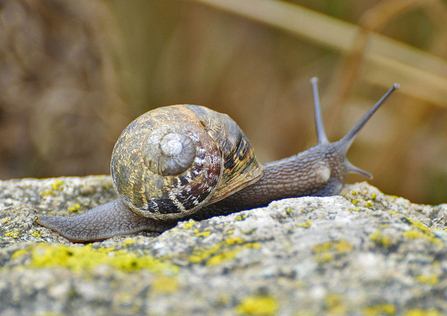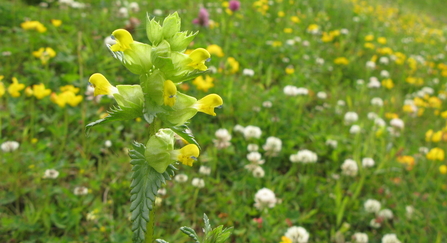Insects have several ways of surviving cold weather, and there really isn’t much evidence to prove that a hard winter makes any difference to pest populations the following year, though at least it stops the pests’ depredations whilst the cold lasts.
Why cold weather is good for nature
(C) Danny Green

(C) John Bridges
Some aphids, slugs and snails may succumb, but most will be tucked away underground or in shelter, and breed rapidly when the weather warms up again in spring. Different insect species overwinter in different ways, entering diapause (a state of suspended development) to survive, some as eggs, others as larvae or pupae, and some as adults. Most aphids overwinter as eggs, which develop only once the freeze is over. Slugs and snails can survive in vegetation, leaf litter or underground, insulated from the worst of the cold.
Once spring has sprung, surviving minibeasts breed quickly, and don’t forget that if the weather has been harsh enough to kill pests, it has probably killed predators too, so there is no net gain for the gardener. The best benefit of a good, sharp frosty spell is probably that it might kill off invasive pests from warmer climes before they can get a foothold – an increasing problem brought about by climate change.
Cold weather does have another positive impact on nature though. Some of our best-loved wildflowers need a period of cold to break the dormancy of seeds or promote flowering.

Yellow rattle (c) Lee Schofield
Yellow rattle, meadowsweet and primulas such as primrose and cowslip all require repeated cold/thaw cycles to germinate, and biennials such as foxgloves flower better after a frosty winter. Apple trees, including our native crab apples, need a minimum chilling time to produce good fruit, and bulbs such as bluebells rely on the cold season to ‘reset their clock’ and produce flowers. If you’re planning to sow meadow seeds in your garden, the seed can be vernalized (which means plants being subjected to cold conditions to stimulate growth of flowers) artificially by putting it in the fridge for a few weeks, but the easiest route is to let nature do the work, and sow the seeds in autumn, leaving the trays outdoors where the frost will get to them.
Warmer winter weather can have a negative effect on hibernating mammals, as mild conditions may lead to early awakening. Bats and hedgehogs, roused from their winter sleep by a warm spell, can struggle to find food, and having wasted stored energy, might have insufficient fat reserves to continue their winter sleep when the temperature drops again. You can help hedgehogs by putting out meaty cat or dog food and water if you see one out and about during winter, but sadly, it’s much more difficult to help bats. Hibernating butterflies can face the same problems – small tortoiseshells, peacocks and red admirals can sometimes be seen in the winter months after a few days of warmer weather. If one appears in the house, fluttering at the windowpane, try offering a bottletop full of sugar water to tide it over until it sleeps again. Few flowers are blooming to provide nectar in the depths of winter, so opening the window will probably not help.
And finally, don’t forget that humans too are affected by the weather. Dark, damp, dreary days do little to cheer us up and encourage us, even if the weather is unseasonably warm. There’s nothing like a bright, crisp, frosty day to tempt us out into the sunshine and fresh air, wrapped up warm and feeling all the benefits of nature!

